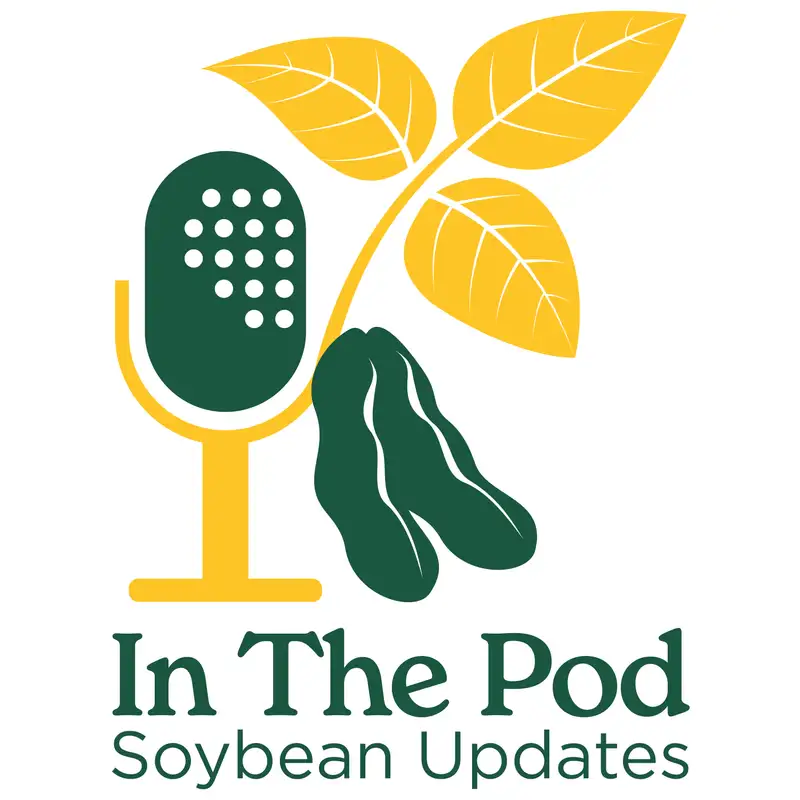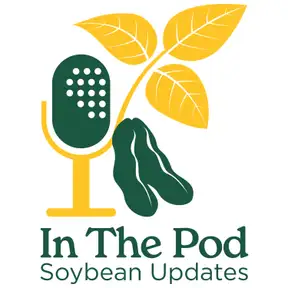03/27/25 How a Crush Plant Powers Agriculture
You're listening to In The Pod, soybean updates, a weekly trek into the latest soybean information from NDSU Extension. Any commodity that is needed somewhere in the world has value. But if the need is right here in North Dakota, all the better. There are two crush plants in North Dakota. Bill McBee, commercial manager with North Dakota Soybean Processors, is here to talk about the plant near Castleton. Bill, tell us about North Dakota soybean processors.
Bill McBee:We're a soybean processing plant in Castleton, North Dakota. It's a joint venture between CGB Enterprises and Minnesota Soy Processors. CGB Enterprises has over a hundred grain elevators and one soybean processing plant all in the Eastern Grain Belt. Minnesota Soy is a 2,300 member coop in Brewster, Minnesota that has a soybean processing plant as well.
Bruce Sundeen:Where do you sell your products?
Bill McBee:So from a 60 pound bushel of beans, we get 44 pounds of meal or 75%. We get 12 pounds of oil or 25%, and then four pounds is the hulls from the outside. So the meal predominantly is a high protein, so it's going to animal feed. Predominantly hogs and poultry, but cows will use some as well. We sell as much domestically as we can, but we also export a fair amount. We'll send trucks up to Canada. We'll send trains down to Mexico, and then a lot will go out to the Pacific Northwest, and put be put on vessels to hit the Asian market for the meal market. The soybean oil, it's a combination. Half of it goes to the food market. We have a full refinery to make food grade soybean oil, and we're selling to food customers that are making salad dressings, mayonnaise, or even your bottled oil that you find in the grocery store that you can fry with. And then the other half is going to biodiesel, And that's really what brought off the expansion in the processing industry is this biofuels, and it really brought on the demand for more crush plants. So the biofuels is predominantly in the West. California and their low carbon fuel standard is kinda what was driving a lot of this. So most of it's going out that direction. The soy hail pellets, they're predominantly a, hay substitute, so they're gonna go into more your cattle markets for feed as well.
Bruce Sundeen:How far away do you buy soybeans?
Bill McBee:Typically, a general rule is about a hundred miles that we will draw. Obviously, the size of the crop is gonna dictate how far we have to go. We'll pull some as far as up in Canada. We have some customers that come down, but they're also taking meal back up. It's not a perfect a hundred miles, but that's just kind of the general rule. We'll buy from both producers and from elevators. If somebody wants to learn more about that, they can go to our website at ndsoy.com and get more information about how to, contract with us.
Bruce Sundeen:Sorry to bring up the t word, but how do tariffs impact your business?
Bill McBee:Yeah. Tariffs are kind of a double edged sword. Canola meal and canola oil both made in Canada and come across, and compete with us. And so the tariffs kinda slow them down, but then we also have products we're trying to send north, and so it hurts with that. On the bean side, because those have been around the trade wars of two thousand nineteen and kinda similar feeling on this one, We're giving the farmers an outlet for their beans. We're here, crushing twenty four seven every day for the whole year. And so we give them a year round market for their beans. I think that's gonna make a huge difference this time.
Bruce Sundeen:Is there anything else that impacts your business?
Bill McBee:Well, as I mentioned, the biofuels is what driving this. So there's some federal programs, the renewable fuel standard. With that, there's a tax credit. You may have heard comment about the 45 z. That took effect the beginning of twenty five, and we're still waiting for clarification on that. And with the new administration, that's kinda been put on hold. That's really hurt our industry. So some clarification there would help. The mandates or the RVO volumes have been set through '25. We're hoping when they set the '26 and beyond that they increase the volumes and, help that industry out as well. So there's some things we're looking at. The other thing is we mentioned California and their low carbon fuel standard. They've got some things that are going on of changing that we're kinda watching to see how that's gonna impact us.
Bruce Sundeen:Thanks, Bill. Our guest has been Bill McBee, commercial manager with North Dakota Soybean Processors. You're listening to In the Pod, Soybean Updates, a weekly trek into the latest soybean information from NDSU Extension.

